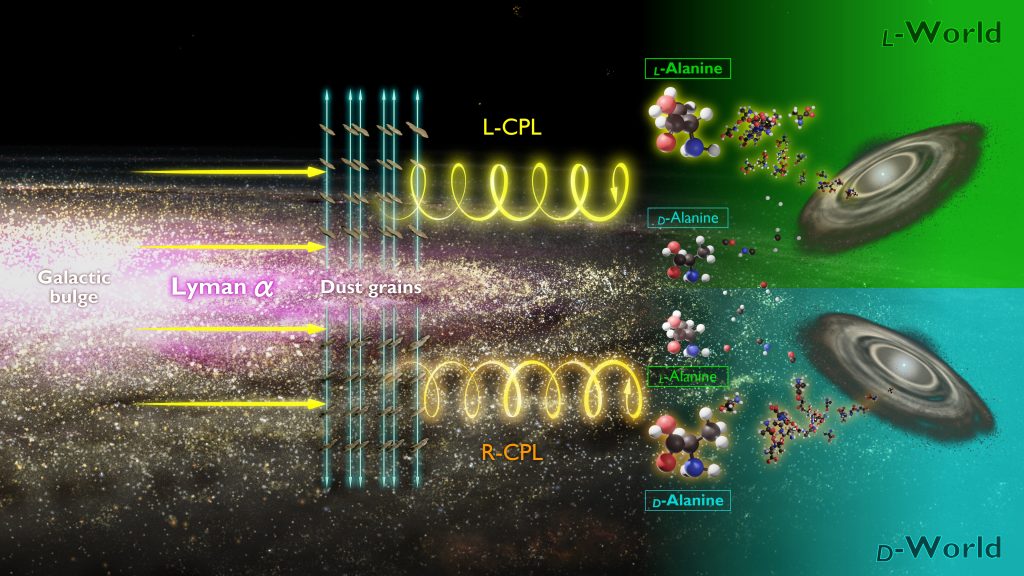The process responsible for the origin oflife on Earth from non-living matter remains shrouded in mystery. One of these mysteries is the homochirality characterizing any life form of our planet. Amino acids, the fundamental building blocks of living organisms, can take two mirror-image forms known as optical isomers, L– and D-forms. Nonetheless, despite this symmetry, life on Earth uses exclusively the L-form (L-form enantiomeric excess). The mechanism responsible for the preferential selection of the L-form in amino acids is still not fully understood. A possible explanation, is the photolysis induced by circularly polarized light during galactic evolution before the emergence of life.
Recently, biomolecules including amino acids have been found in meteorites and asteroids, indicating their existence outside planet Earth. On these grounds, it was proposed that these molecules could have arrived on Earth during its early stage through meteorite impacts, contributing to the origin of life on our planet. On the other hand, during the early stages of galaxy formation, strong emissions of Lyman-α radiation, a wavelength of 121.56 nm (10.2 eV) associated with the de-excitation of hydrogen atoms, have been observed. This radiation was conceivably scattered by interstellar dust, resulting in a widespread region of circularly polarized Lyman-α light. However, the generation of an excess of L-amino acids induced by the radiation in the high-energy region including Lyman-α light, has not been completely understood until recently.
In our study, we theoretically investigated the absorption intensity of amino acids for circularly polarized light in the vacuum ultraviolet region (~11 eV), and derived a new formula able to estimate L-enantiomeric excess covering a wide wavelength range. As a result, we found that there is a specific wavelength region, particularly around 10 eV, where multiple amino acids commonly exhibit a high L-enantiomeric excess. This suggests that L-enantiomeric excess can be induced by Lyman-α irradiation. When applied to our Milky Way, we have been able to show that selective photolysis of D-enantiomer amino acids throughout the entire solar system was induced by the Lyman-α irradiation during the early phase of its galactic evolution. This process explains the origin of homochirality of amino acids on Earth. This mechanism provides an important clue for unraveling the mystery of the origin of life and the cosmic origin of biomolecules.
accepted paper
Title: Origin of Homochirality in Amino Acids Induced by Layman-α Irradiation in the Early Stage of the Milky Way
Journal: Astrobiology

